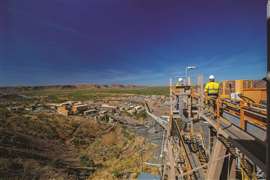Read this article in 中文 Français Deutsch Italiano Português Español
Construction begins on €5.1bn electricity superhighway between Scotland and England
30 September 2024
Construction work on a major UK electricity infrastructure project broke ground last week with a ceremony in Scotland and England at either end of the £4.3 billion (€5.1 billion) EGL2 project – a 2GW subsea electricity link.
 National Grid begins construction in Yorkshire on Eastern Green Link 2 (EGL2) (Photo: National Grid)
National Grid begins construction in Yorkshire on Eastern Green Link 2 (EGL2) (Photo: National Grid)
Representatives from National Grid and SSEN Transmission marked the start of the main construction. The events were held at both ends of the subsea link in Peterhead, Scotland and Wren Hall in Drax, near Selby in North Yorkshire, England.
EGL2’s subsea cable, after travelling 436km under the sea from Peterhead, will come ashore on the East Yorkshire coast at Fraisthorpe Sands and then run underground for 68km to a new high voltage current (HVDC) converter station at Drax.
Once complete, it will add to Scotland’s renewable energy capacity and increase the UK’s capacity to deliver clean energy for around two million homes.
EGL2 is the first of four currently proposed 2GW projects between Scotland and England to begin construction and in total these projects, delivered in partnership by National Grid, are said to have the potential to provide enough renewable electricity to power eight million homes.
Commenting at the ceremony, Zac Richardson, offshore delivery director for National Grid, said, “Today marks an important moment for all involved in the project and the commitment of both National Grid and SSEN in delivering major projects that will play a key role in supporting the UK’s transition to a net zero economy.
“EGL2 is the first of four currently proposed 2GW projects between Scotland and England to begin construction and in total these projects, delivered in partnership by National Grid, could provide enough renewable electricity to power eight million homes.”
Wren Hall Converter Station in Drax has seen the start of main construction activities this month, including site establishment and vegetation clearance. Surveys are expected to continue along the underground cable route in the coming months.
The project is expected to be operational in 2029.
STAY CONNECTED


Receive the information you need when you need it through our world-leading magazines, newsletters and daily briefings.
CONNECT WITH THE TEAM











